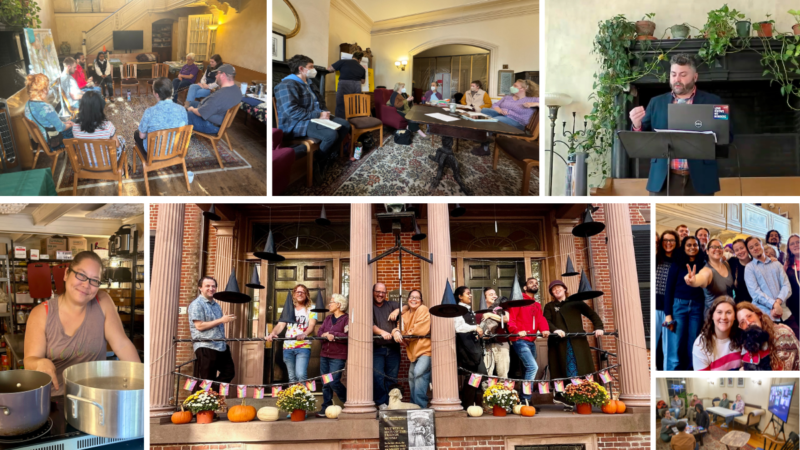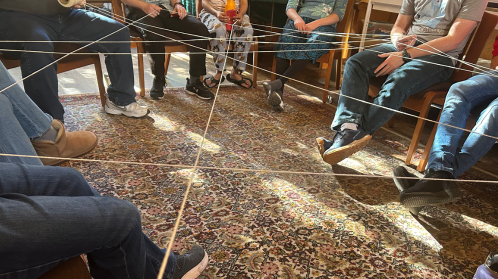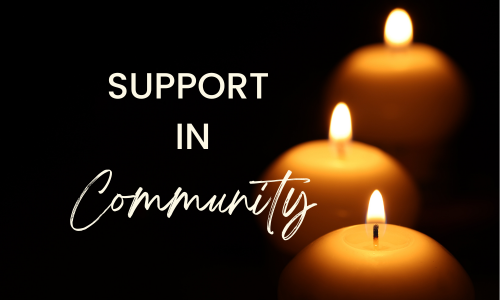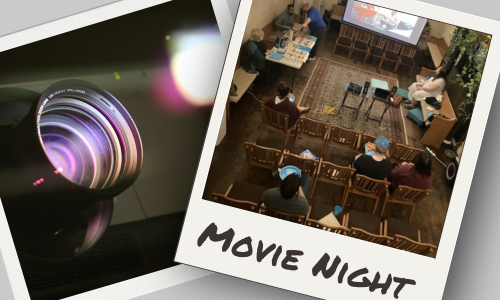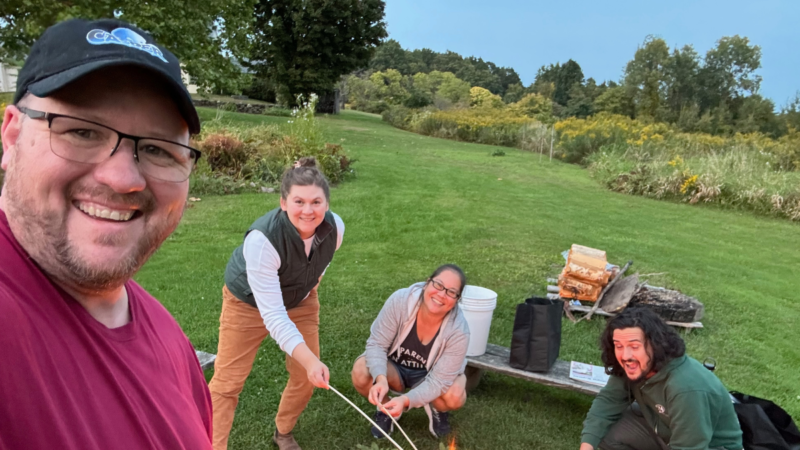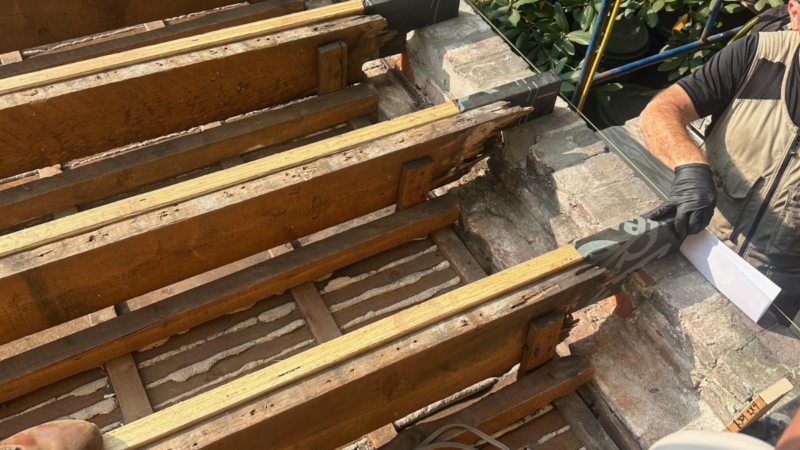View From the Shore/Thanksgiving
By Gail Melix | November 23, 2020
A plenary presentation delivered by Gail Melix on November 19 at “Looking deeply at Thanksgiving” (an event in partnership with the 400 years project and the Southern New England Conference of the United Church of Christ).
Thank you to everyone who organized and participated in this program. Also, a warm welcome to those who attended. It’s an honor to be presenting alongside Joan Tavares Avant, Granny Squannit, Mashpee Wampanoag Elder who is joining us by phone.
My name is Gail Melix. My Wampanoag roots lie in Manomet, a village of Plymouth, known to Indigenous peoples as Patuxet, its original name. I am not a spokesperson for a tribe.
I am also a Quaker from Sandwich Monthly Meeting. I live in Santuit, MA., on Mashpee Wampanoag Sacred Homeland.
Like Joan Tavares Avant, I was taught in school the Pilgrim’s myth of Thanksgiving and the history of this country, minus the indigenous experience.
As a young adult, I was given a book that changed my life, called A People’s History of the United States by Howard Zinn. This was the first time I saw the history of this country from the viewpoint of indigenous peoples, and specifically my Wampanoag ancestors. But I hesitate to use the word viewpoint because Wampanoag history is based on fact.
I’d like to start with some truths about the origins of Thanksgiving:
In 1621, the Wampanoags were not invited to a feast by the Pilgrims. That day, the Plymouth colonists were celebrating their first successful harvest by shooting cannons and muskets into the air.
In response to the gunfire 90 concerned Wampanoag warriors showed up to investigate, to make sure their people weren’t being taken or killed.
After discovering that they were not attacking anyone, our men stuck around to make sure the English settled down and weren’t really gearing up for a battle. Staying meant we needed to feed ourselves, so deer were hunted.
The gathering took place over three days sometime between late September and mid-November in 1621. Although there may have been some diplomacy, one can only imagine the grave uneasiness that was likely present between 90 warriors and the colonialists who were heavily armed. This was not the Thanksgiving portrayed by Pilgrim mythology.
Another truth about Thanksgiving involves the massacre of over 700 Pequot children, women and men.
In 1637 Governor Winthrop proclaimed the first official “Day of Thanksgiving”. He did so to celebrate the safe return of men from the Massachusetts Bay Colony who had gone to Mystic Connecticut and murdered over 700 Pequot children, women and men.
In 1863 President Abraham Lincoln proclaimed Thanksgiving a National holiday. He did this to heal the huge rift between the North and South and to honor the beginning of a NEW country, the United States.
So, there are many things that don’t resonate with Natives about the origins and meaning of this holiday called Thanksgiving.
Linda Coombs, Aquinnah Wampanoag and former associate director of the Wampanoag program at Plimoth Plantation, told the Christian Science Monitor, “We as native people [traditionally] have thanksgivings as a daily, ongoing thing,” “Every time anybody went hunting or fishing or picked a plant, they would offer a prayer or acknowledgment.” End of quote
A fond childhood memory I have is of collecting branches of holly and white pine to make wreaths. I was taught to say thank you after every single branch was snipped. We were careful not to take too many from the same part of the tree. There was a sense of asking before you snipped, and some branches you didn’t cut. You just knew not to … It felt good to say thank you repeatedly.
Ramona Peters, Elder and Bear Clan member of the Mashpee Wampanoag Tribe talks about thanksgiving in this way:
Wampanoags held thanksgivings long before the Americanized holiday became common.
We have four major thanksgiving ceremonies for each season every year and several smaller thanksgivings together for greeting such things as strawberries, green corn and spawning fish. Nothing in our ancestors’ world was taken for granted.
I’d like for those who teach the younger grades to focus more on the sentiment of being thankful. Gratitude is the most powerful Thanksgiving story, from my perspective as a Wampanoag. Our country will benefit socially when young children grasp gratitude in a real way beyond ritual.
“Thanksgiving is a celebration of identity, which for some is as important as food itself.”
National Day of Mourning began in 1970 when Wamsutta Frank James, Aquinnah Wampanoag, was invited to address a gathering of dignitaries commemorating the 350th anniversary of the Pilgrim’s Landing. Because his remarks were not what the Pilgrims’ descendants wanted to hear he was told he could not give his speech. He was told that one would be written for him.
Instead of speaking to a group of dignitaries, Wamsutta Frank James went to Plymouth with a small group of Native Americans and declared US Thanksgiving Day a National Day of Mourning for Indians. He gave his suppressed speech there.
I will include some quotes from this speech. The meaning behind the Day of Mourning is best understood in Wamsutta’s words. Not from someone trying to paraphrase it. The speech can be accessed on our resource page.
“I speak to you as a man — a Wampanoag Man. I am a proud man, proud of my ancestry, my accomplishments won by a strict parental direction (“You must succeed – your face is a different color in this small Cape Cod community!”). I am a product of poverty and discrimination from these two social and economic diseases …
It is with mixed emotion that I stand here to share my thoughts. This is a time of celebration for you – celebrating an anniversary of a beginning for the white man in America. A time of looking back, of reflection.
It is with a heavy heart that I look back upon what happened to my People. Even before the Pilgrims landed it was common practice for explorers to capture Indians, take them to Europe and sell them as slaves for 220 shillings apiece. The Pilgrims had hardly explored the shores of Cape Cod for four days before they had robbed the graves of my ancestors and stolen their corn and beans.
History gives us facts and there were atrocities; there were broken promises — and most of these centered around land ownership. Among ourselves, we understood that there were boundaries, but never before had we had to deal with fences and stone walls. But the white man had a need to prove his worth by the amount of land that he owned.
Only ten years later, when the Puritans came, they treated the Wampanoag with even less kindness in converting the souls of the so-called “savages.” Although the Puritans were harsh to members of their own society, the Indian was pressed between stone slabs and hanged as quickly as any other “witch.”
And so down through the years there is record after record of Indian lands taken and, in token, reservations set up for him upon which to live. The Indian, having been stripped of his power, could only stand by and watch while the white man took his land and used it for his personal gain. This the Indian could not understand; for to him, land was survival, to farm, to hunt, to be enjoyed. It was not to be abused. We see incident after incident, where the white man sought to tame the “savage” and convert him to the Christian ways of life. The early Pilgrim settlers led the Indian to believe that if he did not behave, they would dig up the ground and unleash the great epidemic again.
Moonanum James, son of Wamsutta Frank James continued this annual tradition and during the National Day of Mourning in1998 gave a speech that in many ways mirrored his father’s.
Every year since 1970, United American Indians of New England have organized the National Day of Mourning observance in Plymouth at noon on Thanksgiving Day. Every year, hundreds of Native people and our supporters from all four directions join us. Every year, including this year, Native people from throughout the Americas will speak the truth about our history and about current issues and struggles we are involved in.
About the only true thing in the whole Pilgrim mythology is that these pitiful European strangers would not have survived their first several years in “New England” were it not for the aid of Wampanoag people. What Native people got in return for this help was genocide, theft of our lands, and never-ending repression. Over 350 treaties that Native Nations signed were broken by the US government
The myth of Thanksgiving, served up with dollops of European superiority and manifest destiny, just does not work for many people in this country. As Malcolm X once said about the African American experience in America, “We did not land on Plymouth Rock. Plymouth Rock landed on us.”
Announce:
The 51st Annual National Day of Mourning
November 26, 2020
12:00 Noon
Coles Hill, Plymouth, MA
Native people from throughout the Americas come to this event in Plymouth to mourn their forebears who had been sold into slavery, burned alive, massacred, cheated and otherwise mistreated since before the arrival of the Pilgrims in 1620. It is a solemn day, a spiritual day and a day of protest against oppression and racism.
People who support justice for Indigenous peoples also attend.
I have heard that this will be live streamed.
I would like to close with a prayer if there’s time:
A prayer from Leonard Peltier:
I can always pray, this can never be taken away from me, and through that prayer, I can keep the Sun and hope alive.
And so, on this day, “ Thanksgiving” I will choose to be thankful and not to celebrate tyranny.
I also want to pray with and for you.
I pray for each and every one of you, whether you support me or you do not.
I pray that your lives will be full of meaning and you will find new ways to learn.
I pray for your strength and that you will always stand up for the things you know are right.
I pray that each one of you will find a way to protect our Mother Earth, she is crying out for us to hear her.
I pray that you will listen to your inner wisdom and let it guide you to make choices that will help each other, and that you will be examples for those still learning their way in this life.
I pray that you will be present with the moments you have, enjoy the simple things in life— like the Sun, The Dirt, The Air, The Water, and that you would protect them as you would your own children.
I pray that you will look for opportunities to lift up your sisters and brothers and not to bring them down.
I pray that you will grow and enjoy good natural foods.
I pray for you to savor the attention of your loved ones.
I pray for you to build productive bridges of peace with those you oppose.
I pray that when others make bad choices you help them find positive solutions.
I pray for understanding in times of misunderstanding…….
And yes, I pray very deeply and honestly that I can go home for a little while before I cross over to the Spirit World.
In the Spirit of Crazy Horse,
Leonard Peltier (pronounced Pelteea)
Mitakuye Oyasin!
mi-Tahk-wee-a-say Lakota: we are all related
You can check out the video of the full “Looking deeply at Thanksgiving” event here.

